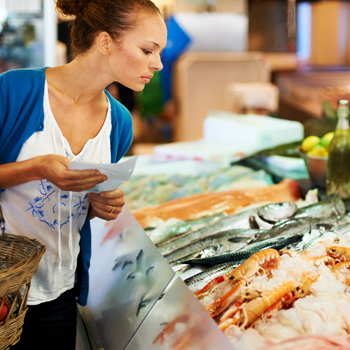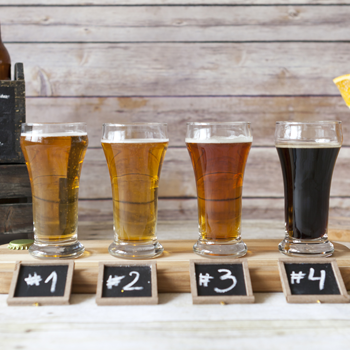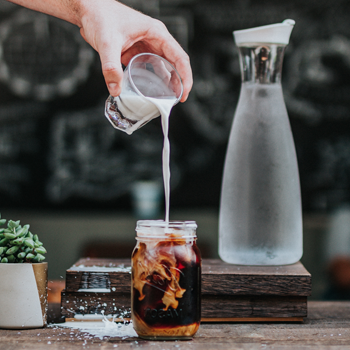
ธุรกิจค้าปลีกอาหารเวียดนามมาแรง โตต่อเนื่อง
By: Food Intelligence Center
National Food Institute
http://fic.nfi.or.th
Full article TH-EN
ธุรกิจค้าปลีกสินค้าอาหารของเวียดนามมีการเติบโตอย่างต่อเนื่อง โดยเฉพาะในเชิงมูลค่าการตลาด ซึ่งมีอัตราการขยายตัวเฉลี่ยสูงถึงร้อยละ 16.9 ต่อปี ตลอดช่วงที่วิเคราะห์ (ปี 2554-2558) โดยใน ปี 2558 สามารถสร้างรายได้จากการจำหน่ายคิดเป็นมูลค่า 1,371.4 ล้านล้านด่ง มีจำนวนสาขารวม 648,900 แห่ง (รูปที่ 1) ส่วนใหญ่เป็นผลจากการขยายตัวของร้านค้าสะดวกซื้อ ซึ่งมีการเติบโตของมูลค่าการตลาดมากกว่า 3 เท่า ตลอดช่วงที่วิเคราะห์ โดยได้รับอานิสงส์จากรูปแบบการใช้ชีวิตของชาวเวียดนามที่ต้องทางานยาวนานขึ้น โดยเฉพาะผู้ที่ทางานในออฟฟิศ จึงไม่มีเวลามากนักที่จะออกไปซื้อสินค้าอาหาร ดังนั้น พวกเขามักจะซื้อสินค้าอาหารกักตุนไว้คราวละจานวนมาก โดยเฉพาะอาหารบรรจุเสร็จ เพื่อประหยัดเวลาในการปรุงอาหาร โดยสินค้าดังกล่าวมักจะมีวางจำหน่ายอย่างหลากหลายในห้างค้าปลีกสมัยใหม่ รวมถึงไฮเปอร์มาร์เก็ตและซูเปอร์มาร์เก็ต ซึ่งเป็นห้างค้าปลีกอีกรูปแบบหนึ่งที่กำลังเติบโตอย่างรวดเร็วในช่วงที่ผ่านมาด้วยเช่นกัน
สำหรับกาจำหน่ายสินค้าอาหารผ่านอินเทอร์เน็ตถือว่าเป็นอีกรูปแบบหนึ่งที่กำลังได้รับความสนใจจากผู้บริโภคชาวเวียดนาม โดยผู้ค้าปลีกรายใหญ่ อย่าง บริษัท Saigon Union of Trading Cooperatives และบริษัท Casino Guichard-Perrachon ต่างพัฒนาเว็บไซต์เพื่อรองรับพฤติกรรมการบริโภคดังกล่าวของชาวเวียดนามที่ต้องการสั่งซื้อสินค้าจากบ้าน อย่างไรก็ตาม แม่บ้านชาวเวียดนามส่วนใหญ่ยังนิยมมาเลือกซื้อสินค้าอาหารสดที่ร้านค้าปลีกด้วยตนเอง โดยกลุ่มที่อาศัยอยู่ในเขตเมืองจะเลือกไปจับจ่ายซื้อสินค้าอาหารที่ห้างค้าปลีกสมัยใหม่ ขณะที่กลุ่มผู้ที่อาศัยในเขตชนบทยังคงชื่นชอบการไปเดินเลือกซื้อสินค้าตามตลาดสดหรือร้านขายของชำขนาดเล็กแบบเดิม เนื่องจากพวกเขาเดินทางโดยรถจักรยานยนต์ จึงมีความสะดวกกว่า หากไปซื้อที่ร้านใกล้บ้าน หรือร้านข้างทาง แทนการไปจอดรถที่ซูเปอร์มาร์เก็ตและต้องเสียเวลารอคิวชำระเงิน
ในปี 2558 ธุรกิจค้าปลีกแบบดั้งเดิม จัดเป็นรูปแบบการค้าหลักสินค้าอาหารในเวียดนาม ด้วยสัดส่วนร้อยละ 95 ในเชิงมูลค่า และร้อยละ 99.8 ในเชิงจำนวนสาขา โดยร้านขายของชำแบบดั้งเดิมอื่น เช่น ตลาดสด และร้านขายของชำอิสระขนาดเล็ก ครองส่วนแบ่งธุรกิจมากที่สุดร้อยละ 65.3 และ 27.3 ของมูลค่าการค้าปลีกสินค้าอาหารทั้งหมดในเวียดนาม (รูปที่ 2) อย่างไรก็ตาม ทิศทางการเติบโตของธุรกิจค้าปลีกแบบดั้งเดิมเริ่มถดถอยลง เนื่องจากผู้บริโภคชาวเวียดนามจำนวนมากเปลี่ยนจากการซื้อสินค้าอาหารจากตลาดสดแบบเดิม และหันไปเลือกซื้อสินค้าอาหารจากซูเปอร์มาร์เก็ตมากขึ้น โดยผู้ประกอบธุรกิจซูเปอร์มาร์เก็ตต่างลดราคาสินค้า เพื่อดึงดูดลูกค้าให้เข้ามาซื้อสินค้าของตนมากขึ้นเช่นกัน ส่วนร้านค้าลดราคา (discounters) ในเวียดนามยังไม่ปรากฏให้เห็นในปัจจุบัน เนื่องจากผู้ค้าปลีกรายใหญ่มักจะมีความสัมพันธ์ทางธุรกิจที่ดีกับผู้ผลิตสินค้าอาหารอยู่แล้ว จึงไม่มีความจำเป็นต้องพึ่งพาผู้จัดหาสินค้า (Suppliers) เพื่อให้ได้ราคาที่ถูกลง
ผู้เล่นสำคัญ
บริษัท Saigon Union of Trading Cooperatives เป็นผู้นำธุรกิจค้าปลีกสินค้าอาหารในเวียดนามอย่างต่อเนื่อง ครองส่วนแบ่งตลาดสูงสุดร้อยละ 1.9 ของมูลค่าธุรกิจค้าปลีกสินค้าอาหารทั้งหมดในเวียดนาม ในปี 2558 จำกการดำเนินร้าน “Co.opMart” และร้าน “Co.op Food” ซึ่งมีจำนวนร้านสาขามากถึง 117 และ 80 แห่ง กระจายอยู่ทั่วประเทศ โดยทางร้าน “Co.opMart” ได้พัฒนาแอพพลิเคชันบนมือถือสำหรับกลุ่มลูกค้าเดิมของร้านในการเก็บสะสมคะแนนจากการสั่งซื้อสินค้า รวมทั้งการรับทราบข่าวสารโปรโมชั่นสินค้าต่าง ๆ ของทางร้านด้วย นอกจากนี้ยังมีผู้ค้าปลีกที่จัดเป็นผู้นำในธุรกิจไฮเปอร์มาร์เก็ต ได้แก่ ร้าน “Big C” ของบริษัท Casino Guichard-Perrachon และร้าน “Lotte Mart” ของบริษัท Lotte Shopping มีส่วนแบ่งตลาดร้อยละ 1.5 และ 0.3 ของมูลค่าธุรกิจค้าปลีกสินค้าอาหารทั้งหมดในเวียดนาม ตามลำดับ ทั้งนี้ในปี 2558 ได้มีผู้ค้าปลีกรายใหม่ อย่าง ร้าน “Vinmart” ของบริษัท VinPro เข้ามาเปิดธุรกิจร้านค้าสะดวกซื้อในเวียดนามเป็นครั้งแรกกว่า 100 สาขา ส่งผลให้ร้าน “Fivimart” ของบริษัท TCT Group ต้องสูญเสียส่วนแบ่งธุรกิจไป ซึ่งต่อมาบริษัท Aeon Vietnam ได้เข้ามาซื้อหุ้นส่วน ร้อยละ 30 ของกิจการซูเปอร์มาร์เก็ต “Fivimart” และร้อยละ 49 ของกิจการซูเปอร์มาร์เก็ต “Citimart” ของบริษัท Dong Hung Trading Service เพื่อรักษาสถานะทางธุรกิจนี้ไว้ โดยร้าน “Co.opMart” และร้าน “Big C” จะเน้นกลยุทธ์การแข่งขันด้านราคาเป็นหลัก ขณะที่ร้าน “Lotte Mart” จะเน้นกลุ่มผู้บริโภคที่มีรายได้ปานกลาง-สูง ส่วนร้าน “Fivimart” และร้าน “Citimart” จะเน้นจำหน่ายสินค้าอาหารนำเข้า โดยเฉพาะสินค้านำเข้าจากญี่ปุ่น
In the current situation, Vietnam’s food retail industry is growing unstoppably, especially the market value which grows averagely 16.9% annually throughout our period of research (2011 – 2015). Only in 2015, the industry earned 1,371.4-trillion-dong profit from sales in 648,900 branches (Figure 1), mostly because of the expansion of convenient store, whose market value growth increased 3 folds during the period. The trend was the result of changing lifestyle, for which many Vietnamese are working longer house, particularly office workers, and they do not have enough time to shop for grocery. Therefore, these consumers are hoarding large amount of food, instant food specifically, to safe cooking time. Such kind of products are often available in modern retail store, hypermarket, and supermarket, which are different types of retail store that are flourishing rapidly during this same period.
Internet retail store is another interesting shopping channel for Vietnamese consumers. Many giant retail stores, for example Saigon Union of Trading Cooperatives and Casino Guichard-Perrachon, are developing their websites in respond to the new consuming behaviour where many prefer to purchase items from their homes. Nonetheless, many Vietnamese housewives still prefer to come to the retail stores. Housewives in urban area are often found shopping at modern retail stores, while those in rural areas are keen to shop from wet markets or small convenience stores. For the provincials, it is easier for them to travel to convenience stores close to home than stop at supermarkets and wait for the queue, because they usually commute on motorcycles.
In 2015, traditional retail store is the main channel for food trade in Vietnam, taking 95% of the total market value, and 99.8% in terms of number of branches. Traditional retail store includes wet market and small independent convenience store, who controls 65.3% and 27.3% of the national market share per volume, respectively. (Figure 2) Nevertheless, traditional retail stores are in decline after many Vietnamese consumers changed from buying food from wet market to buying from supermarket. Supermarkets also run promotion campaign, e.g. price cut, to attract more consumers. Meanwhile, discounters are not yet seen in Vietnam as many large retail chains hold close relationships with food manufacturers, hence, there is no need to rely on suppliers for discounts.
The key player, Saigon Union of Trading and Cooperatives, has long been the leading food retailer in Vietnam, controlling 1.9% of the retail market value. In 2015, its Co.opMart and Co.op Food has 117 branches and 80 branches nationwide, respectively. Co.opMart recently develop a mobile phone application for loyal customers to collect points and receive news and promotions. Not only that, there’s also hypermarket players like Big C (by Casino Guichard-Perrachon) and Lotte Mart (by Lotte Shopping), who control 1.5% and 0.3% of the market share, respectively. We also see a new player in 2015, Vinmart (by VinPro), who kicked off with more than 100 branches and stole some market share from Fivimart (by TCT Group). Eventually, Aeon Vietnam has brought 30% share from Fivimart, and 49% from Citimart (by Dong Hung Trading Service) to maintain these businesses. Co.opMart and Big C focus on price cut strategy, while Lotte Mart targets medium to high income consumers. Fivimart and Citimart, on the other hand, add import foods to their strength, especially with Japanese products.









